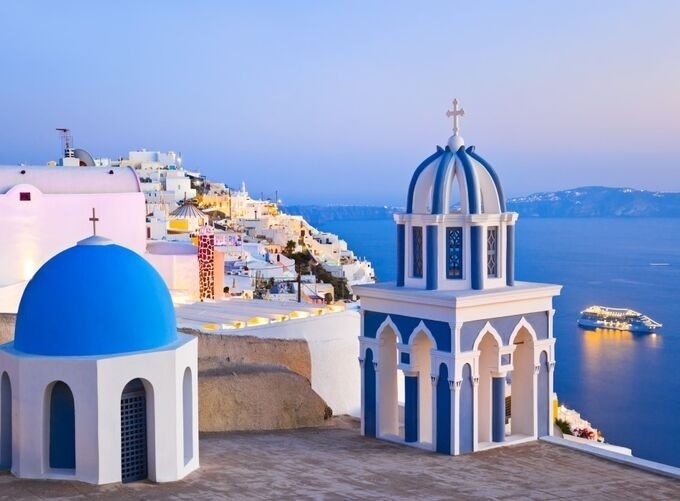
Seven Ancient World Wonders | History & Travel Guide
The Ancient Wonders of the World have captivated travelers, historians, and enthusiasts for centuries. These monumental structures, created with remarkable ingenuity and artistry, represent the zenith of human achievement in the ancient world. In this exploration, we will delve into the fascinating stories behind these wonders, their cultural significance, and the legacy they have left for generations to come.
The Seven Wonders of the Ancient World
The Seven Wonders of the Ancient World were a collection of extraordinary constructions recognized by ancient historians. They were celebrated not only for their grandeur but also for the skill and determination involved in their creation. Although many of these wonders no longer exist, their stories endure.
The Great Pyramid of Giza
-
- Location: Giza, Egypt
- Date Constructed: Approximately 2580–2560 BCE
- Significance: Visit The Great Pyramid of Giza is the only surviving wonder of the original seven. It was built as a tomb for the Pharaoh Khufu and originally stood at 146.6 meters (481 feet). Its construction involved millions of limestone blocks, showcasing the incredible architectural skills of the ancient Egyptians.
Cultural Impact: As a testament to ancient Egyptian civilization, the pyramid symbolizes not only their architectural prowess but also their religious beliefs surrounding the afterlife. The precision of its alignment and its massive scale continue to astound architects and archaeologists today.
The Hanging Gardens of Babylon
-
- Location: Babylon, near present-day Hillah, Iraq
- Date Constructed: Date remains uncertain; possibly in the 6th century BCE
- Significance: Described as an extraordinary series of tiered gardens containing a wide variety of trees, shrubs, and vines, the Hanging Gardens are said to have been built by King Nebuchadnezzar II for his wife, Amytis of Media, who longed for the green hills of her homeland.
Cultural Impact: Although its existence remains debated, the Hanging Gardens have become an enduring symbol of beauty and innovation in engineering. They inspire a vision of harmony between nature and human creativity, reflecting ancient Mesopotamian culture's reverence for nature.
The Statue of Zeus at Olympia
-
- Location: Olympia, Greece Trip
- Date Constructed: Approximately 435 BCE
- Significance: Created by the famed sculptor Phidias, this monumental statue depicted the god Zeus seated on a throne, adorned with gold and ivory. The statue stood about 12 meters (39 feet) tall and was housed in the Temple of Zeus.
Cultural Impact: The Statue of Zeus not only represented the religious beliefs of the ancient Greeks but also their artistic achievements. It was a focal point of the Olympic Games, symbolizing the cultural and athletic excellence of ancient Greece.
The Temple of Artemis at Ephesus
-
- Location: Ephesus, Turkey
- Date Constructed: Approximately 550 BCE
- Significance: This grand temple was dedicated to the goddess Artemis, the goddess of hunting and fertility. The temple was renowned for its size and ornate sculptures, measuring 115 meters (377 feet) long and 55 meters (180 feet) wide.
Cultural Impact: The Temple of Artemis was a major religious center and attracted pilgrims from across the ancient world. Its architectural grandeur set a standard for future temples and remains a symbol of the wealth and culture of Ephesus.
The Mausoleum at Halicarnassus
-
- Location: Bodrum, Turkey Packages
- Date Constructed: Approximately 350 BCE
- Significance: This monumental tomb was built for Mausolus, a satrap of the Persian Empire. Standing around 45 meters (148 feet) tall, the mausoleum was adorned with intricate sculptures and a unique architectural design.
Cultural Impact: The Mausoleum at Halicarnassus represents the blend of Greek, Egyptian, and Lycian influences in art and architecture. It inspired later monumental tombs, and the term "mausoleum" has since been derived from Mausolus's name.

The Colossus of Rhodes
-
- Location: Rhodes, Greece
- Date Constructed: Approximately 280 BCE
- Significance: This colossal statue of the sun god Helios stood approximately 33 meters (108 feet) high at the entrance of the harbor of Rhodes. It was considered one of the tallest statues of the ancient world.
Cultural Impact: The Colossus symbolized the unity of the people of Rhodes after their victory over Cyprus. Its sheer scale and artistry inspired generations of sculptors, and it remains a powerful symbol of freedom and triumph.
The Lighthouse of Alexandria (Pharos of Alexandria)
-
- Location: Alexandria, Egypt
- Date Constructed: Approximately 280 BCE
- Significance: This towering lighthouse was built on the small island of Pharos and stood around 100 meters (330 feet) tall. It was one of the tallest man-made structures in the world for many centuries and served as a prototype for all subsequent lighthouses.
Cultural Impact: The Lighthouse of Alexandria was not only a vital aid for sailors navigating the treacherous waters but also a symbol of the city's wealth and significance as a center of learning and culture. Its innovative design influenced the construction of lighthouses for centuries.
The Legacy of the Ancient Wonders
While most of these wonders have been lost to time, their influence persists in various aspects of modern society, including architecture, art, and engineering. The tales of their grandeur continue to inspire countless artists, writers, and architects, demonstrating the enduring power of human creativity.
Cultural and Historical Significance
The Seven Wonders of the Ancient World highlight the achievements of various civilizations, showcasing their ingenuity and creativity. They serve as a reminder of the rich tapestry of human history and the cultures that have shaped our world. Each wonder reflects the values, beliefs, and artistic aspirations of its time, providing insight into the societies that created them.
Influence on Modern Architecture
The architectural techniques and styles of these ancient wonders have influenced modern architecture in numerous ways. For instance, the principles of symmetry and proportion seen in the Parthenon can be found in contemporary buildings worldwide. The use of columns, arches, and domes in architecture can trace its roots back to these ancient structures, showcasing the timeless nature of good design.
The Quest for Knowledge and Discovery
The search for the lost wonders, such as the Hanging Gardens of Babylon, has spurred archaeological exploration and research. Excavations and studies aimed at uncovering their remnants have contributed to our understanding of ancient civilizations and their achievements. This quest for knowledge reflects humanity's enduring desire to learn about its past and the cultures that came before us.
Ancient Wonders of the World Revealed
The Ancient Wonders of the World encapsulate the brilliance of human ingenuity and creativity. They stand as a testament to the aspirations and accomplishments of civilizations that have shaped our history. While the majority of these wonders have succumbed to the ravages of time, their stories endure, inviting us to explore and appreciate the rich tapestry of our shared heritage.
As we continue to uncover the mysteries of the past, we not only honor these ancient wonders but also inspire future generations to create, innovate, and dream. The legacy of the Ancient Wonders serves as a reminder that, regardless of time and circumstance, the human spirit is capable of achieving greatness.



